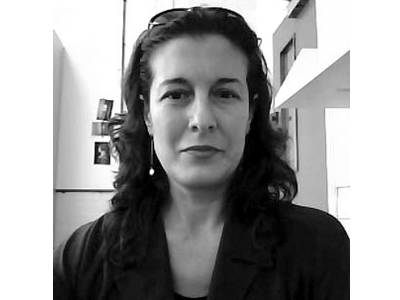
After studying cultural science, Anna Schetelich had the pleasure of collaborating with several different museums in Berlin. During this time, the crossovers between art and fashion became very popular, and she was introduced to art jewelry by a friend. This discovery fascinated her to the point that she pursued the idea of setting up her own gallery to promote jewelry as a form of art, and Anna founded Gallery OONA in 2000.
Her appreciation for art jewelry resides in a fascination for artists’ ability to express themselves through very small objects that can be worn and also be considered as autonomous pieces. OONA Gallery’s virtual and physical identity is minimalist and bestows a lot of attention upon showing the jewels in a continuous bright space with flat planes. Every individual piece of work is shown in a way that emphasizes its own aura by giving it space to breath. In this conversation, you’ll discover more of Anna’s interests in jewelry, her gallery ethos, and the next exhibition.
Roberta Bernabei: How did you come up with the name Oona?
Anna Schetelich: When I founded the gallery in fall 2000, I was reading the biography of Charlie Chaplin. His wife’s name was Oona; she was a beautiful woman with fascinating appeal. I very much liked the double O in that short and concise name. Written in Futura font, they become two circles, one essential shape in jewelry.
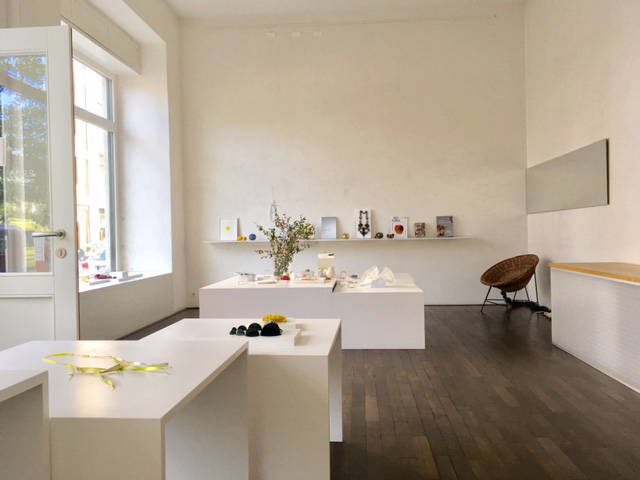
What did you have in mind when you were designing Oona? What was the feeling and desired impression you wanted to create for the viewer?
Anna Schetelich: It was more a process of finding out where I want to go with the gallery.
Now I would describe the gallery’s atmosphere as a clear and pleasant one.
I knew very early to present the artist’s work in the open, not covered with showcases. One reason is the materiality of the object: You want to feel it, to see all aspects. The communicative potential of this kind of jewelry demands this way of presentation, in my opinion.
It’s very helpful to have this fantastic airy space with huge windows and good light, so the white tables create a stage for the pieces, they can “breathe.”
From the beginning, I used the website of OONA Gallery as one extended show window. I drive a lot of attention to its design and currentness. Luckily, my web designer and photographer understand perfectly what I want and what represents the gallery in the best way.
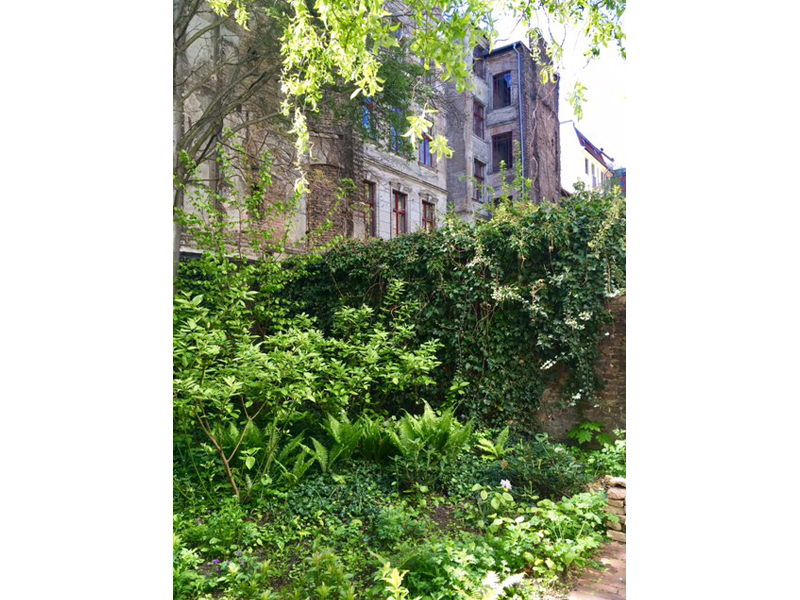
What makes OONA Gallery unique or different from other galleries for studio jewelry?
Anna Schetelich: I don’t compare myself with other galleries, but of course I’m interested in their work.
In a way, I’m permanently occupied (and I like to be) with having a good choice of artists and work in my space. I want different artistic positions but all of them together need to have a good spirit. It is easier for me to express it in musical terms—my intention is to unite different excellent voices into one melodic sound. I prefer to work with a small, quiet group, so we’re able to have a close relationship, with talks about inspiration, sometimes intense discussions about jewelry, studio visits, feedback, critiques.
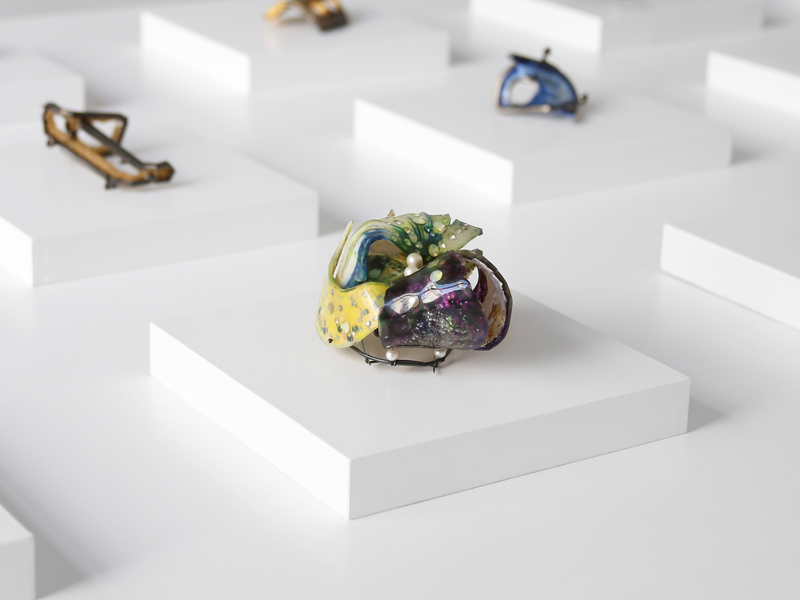
When asked to describe to someone what you show in the gallery, how do you describe studio jewelry?
Anna Schetelich: For me, studio jewelry basically means jewelry with complexity. It’s the interaction of artists’ thoughts and craft that fascinates me. The longer I’ve owned the gallery, the more I’ve found out how important this physical relation between the artist and his work is. The layering of thoughts and their technical realization, all the attention and time one piece of jewelry gets, can never be compared to a serial product. Sometimes the result can appear very simple, but this simplicity is one quality and the result of hard work.
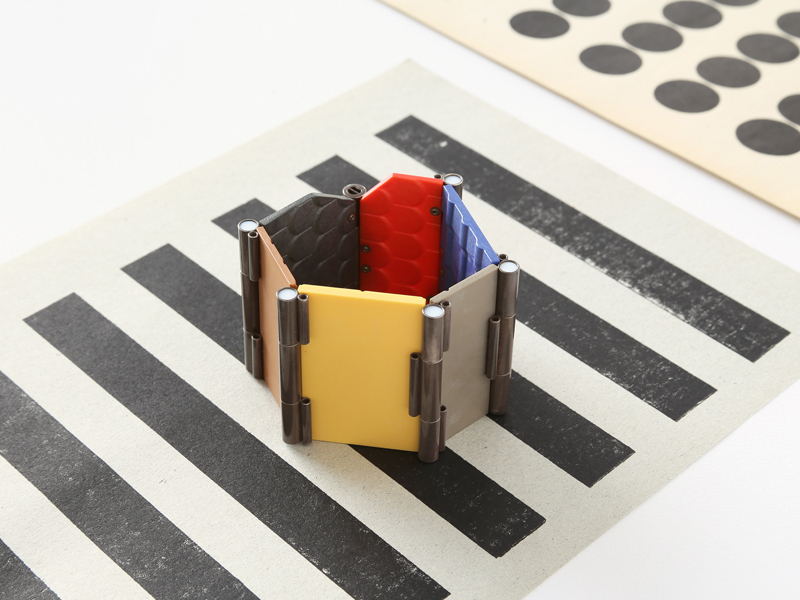
From the images I’ve seen, OONA Gallery has an elegant and minimalist interior design and the pieces of jewelry feel as if they were designed to fit in that space. How did you decide upon the gallery design and its display setting?
Anna Schetelich: Before I founded OONA, I had worked several times in museums in Berlin, preparing exhibitions. I always liked to set objects, finding good placement, creating interaction with other pieces; this might have been the beginning … The interior of the gallery is in a way very simple. Years ago, I drafted various white tables which can also be arranged as one huge table with slightly different levels, or however you want it separated. I try always to give the works the space that they need. The clearness of the white tables and stands creates a good gallery atmosphere.
But sometimes I very much enjoy arranging a living setting with different pieces. It’s interesting how the pieces can interact. I think, after long years, that I have got a good sense of knowing what works. I also want to lead my visitors to consider these works not “only” as jewelry to be worn. They all have the power of autonomous objects that can be worn as well as kept as wonderful objects.

But how do you show the audience the relationship between the selected pieces of work and the human body when they’re worn?
Anna Schetelich: No, I never show this relationship. My experience is that each piece reacts completely differently on different persons. I want to keep the door open for any experiences. I like to support my visitors in trying on the pieces, and some great moments can happen.

You have an interesting selection of jewelry artists. How do you select who you represent?
Anna Schetelich: There are plenty of interesting artists. I constantly watch the scene and I take the aspect of curation really seriously. In the end, what counts for me is the ability to drive thoughts, ideas, and techniques into work with a certain abstract character. I don’t want to see the very personal story behind the work, and I personally wouldn’t like to wear one person’s intimacy on my body. Some artists try to push it all into one brooch: concept, technique, material, etc. It’s too much for me. I want to see the essence of the artist’s process.
The second point is the beauty of the jewelry—of course! We should never forget that it’s made to be worn on the body and the wearer has to feel very good with it. It’s a hard challenge for artists to get this balancing act, and they earn my deepest respect for it.
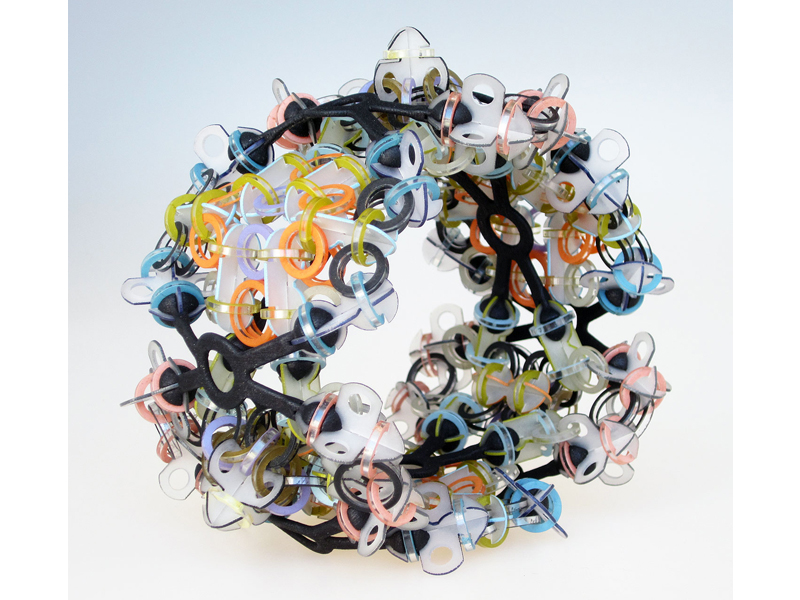
What do you see as the future of this particular kind of jewelry?
Anna Schetelich: I suppose this kind of jewelry will stay a limited field. It needs engagement and attention to discover its beauty and sense. Also, for me it can take some time to discover the quality of a work. Sometimes I have to look at pieces several times but case like this may become the strongest love.
In recent years, I have seen that more and more people have esteem for the quality of excellent design and craft. They love to discover something unique, something not to be found everywhere. So I’m very optimistic.
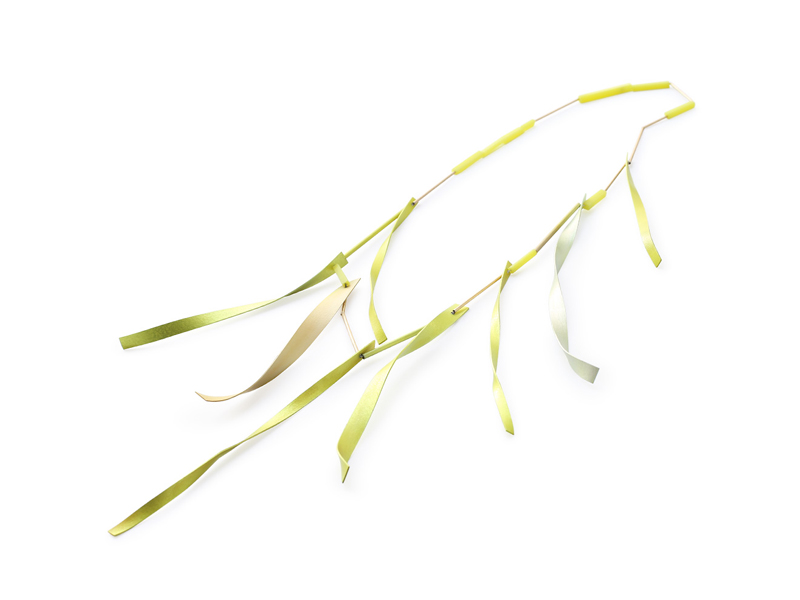
Any future plans to subvert the notion of the traditional exhibition?
Anna Schetelich: Not sure yet. I think jewelry is a very traditional field at the moment. The idea of studio jewelry that we represent is sometimes a bit strange for the audience. So I prefer to offer one situation that makes people feel comfortable.
What’s your next exhibition at OONA Gallery?
Anna Schetelich: The next show will present new work by Svenja John. She has started to integrate new technology and material into her work. This exhibition will be shown online as well.
